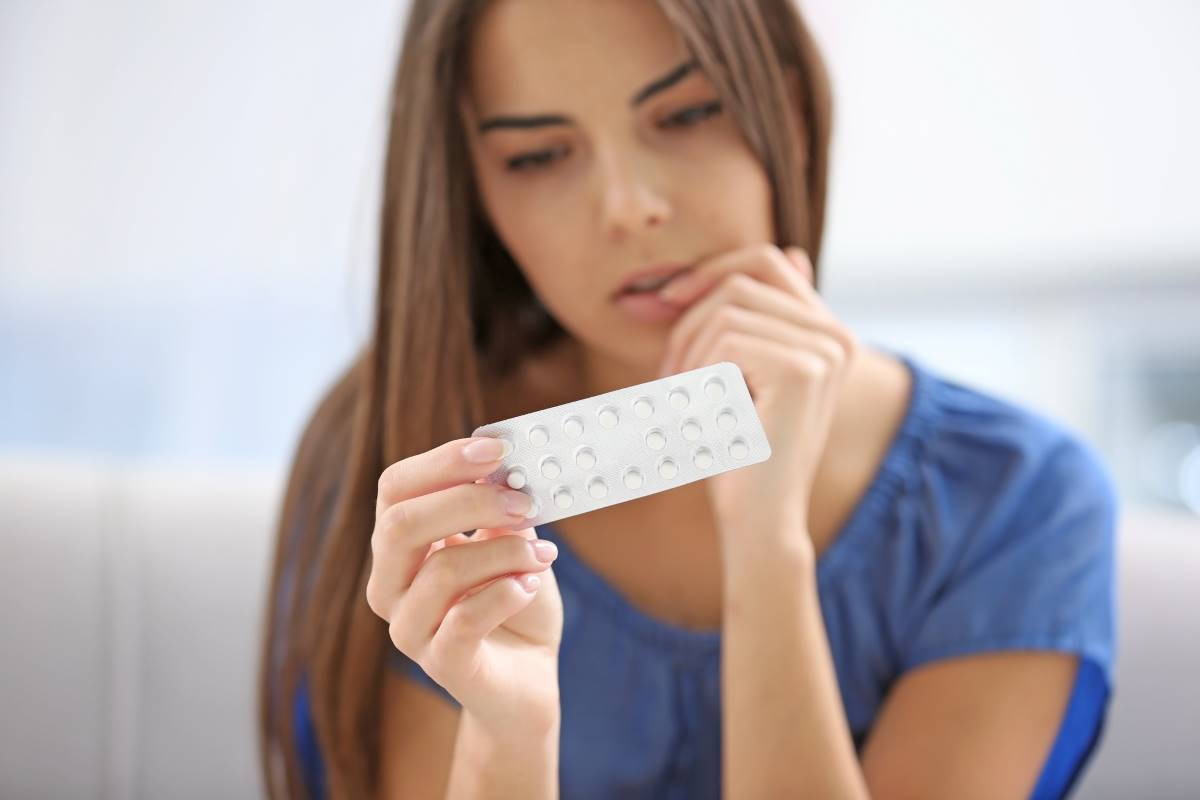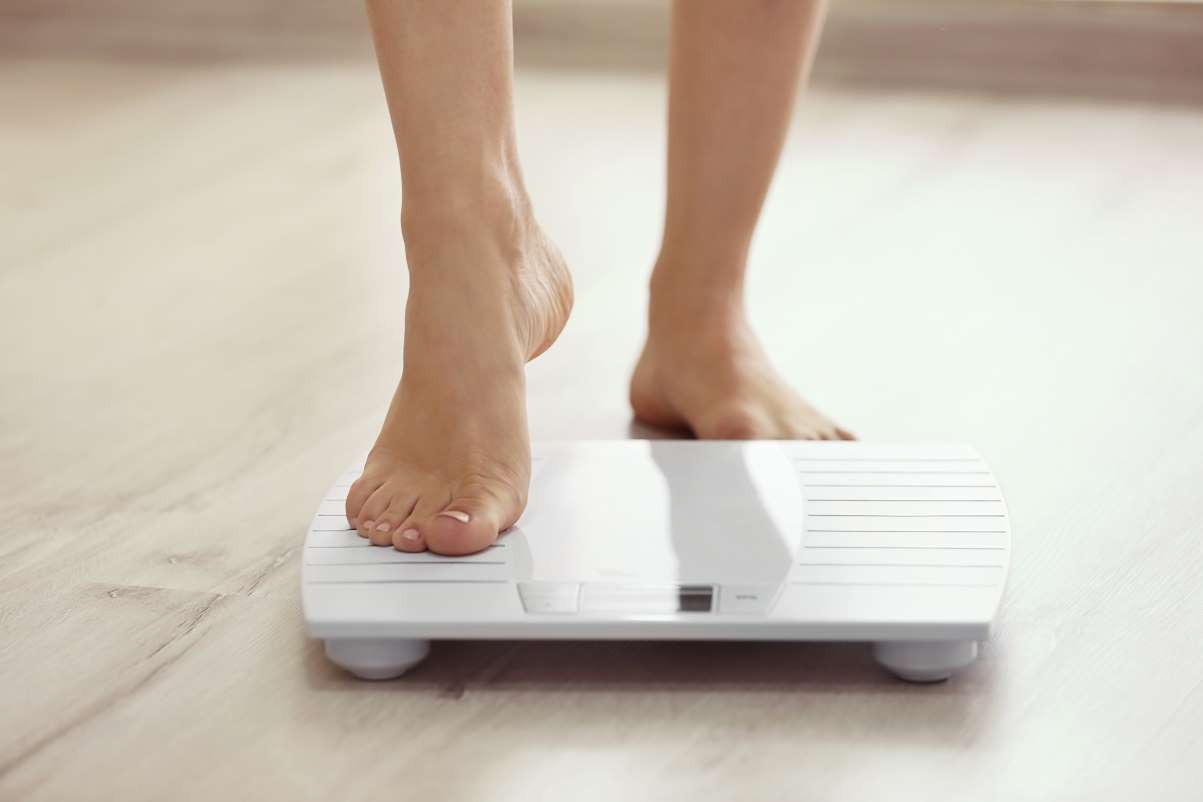The Menstrual Cycle – Your Guide To Training Smarter
The menstrual cycles refers to a series of hormonal production and physiologic changes that women undergo in preparation for possible pregnancy.
These fluctuations can also have other physiological effects. They affect mood, metabolism, weight, and energy levels among other things.
While the menstrual period can sometimes seem like a curse to women, it has many positive aspects.
Learn everything you need about the female cycle and get practical tips that will help you navigate your period confidently.
What is the menstrual period?
The term’menstrual,’ comes from the Latin for month – mensis. It refers to the biological cycle of women that prepares them for pregnancy. The menstrual cycle begins with a woman’s entry into puberty, also called the menarche. It continues until menopause when her reproductive system is shut down.
The menstrual cycle of a woman can last between 28 and 32 days. It may even be longer depending on stress. Eumenorrhea is the term used to describe a normal menstrual cycle. The menses or menstruation begins on the first day of the cycle. The uterine lining becomes thicker throughout the cycle to provide nutrients for the fertilised egg. The uterine lining is thrown out if fertilisation doesn’t occur. This results in bleeding or menstruation lasting between three and five days. The rest of the cycle is divided into two phases: follicular phase and luteal phase (further subdivided into early and later stages).

Menstrual cycle is a key player
The menstrual cycles is a complex process that involves many glands and hormones. These have a number of knock-on effects.
The four main players in the women’s menstrual cycle include:
1. Oestrogen
It is involved in many vital functions including bone formation, fat storage patterns and neurotransmitter release.
2. Progesterone
Stimulates the growth of blood vessels and glandular tissue to create a fertile environment in which to lay ovules.
3. Follicle stimulating hormone
Stimulates the follicles and eggs before ovulation.
4. Luteinising hormone
Supports the development of eggs and progesterone.
Menstrual cycles phases
1. The follicular stage
The first half is called the follicular period and lasts around 14 days. The follicular phase can be divided into smaller phases lasting three to five days, starting with menses. Follicle-stimulating hormonal effects cause follicles to develop (fluid filled sacs where female eggs grow). Women produce many follicles but only one egg is released.
Progesterone is low during this phase, while oestrogen begins low and increases gradually. This phase is characterized by a sudden surge in oestrogen during the last few days of the period, which causes a follicle burst and releases an egg. The ovum or egg implants into the uterine wall. The increase in oestrogen results in thicker vaginal mucus. This makes the vagina more welcoming for sperm. Women’s discharge changes are often interpreted by traditional medicine as an indicator of ovulation.
Physical symptoms of the follicular stage
Oestrogen is a major factor in the regulation of thyroid hormones that control energy expenditure. metabolism tends to drop during this phase. strong>Oestrogen has a strong relationship with leptin/strong>, the satiety-regulating hormone. Higher levels of oestrogen produce a stronger response to leptin, which means that your appetite and hunger should be better controlled during this period.
Oestrogen has an anti-inflammatory action on the body. women who are in a high oestrogen phase recover more quickly from exercise and can handle higher levels of intensity and volumein the gymnasium. Oestrogen has a positive effect on insulin. Women are more sensitive to insulin during the follicular stage, which means they can metabolise carbs more efficiently.
This stage is a great opportunity to prioritize a more intensive and harder training.
The relationship between oestrogen and the anti-diuretic arginine vasopressin is a final physical sign of the follicular stage[1]. may cause temporary weight gain as oestrogen increases between days 10 and 14 of the cycle.

This is an excellent time for women to intensify their training.
2. The luteal Phase
The ovulation occurs around the 14th day of the cycle. This marks the mid-point of the cycle as well as the end of follicular stage. A brief surge in testosterone occurs around this time. The luteal stage begins.
The early luteal stage is when the follicle which released the egg becomes a mass known as corpus luteum, giving this phase its name. This causes a surge in progesterone. Progesterone levels and oestrogen levels increase over the first half luteal period, reaching a peak around day 21.
Progesterone levels remain higher, but oestrogen levels drop to half what they were at the peak of follicular phases. The body temperature increases by two degrees centigrade. This is a sign that the follicular and luteal phases are ending. This slight rise in body temperature also causes a slight increase in metabolic rate.
Late luteal phase
Around day 21, progesterone levels and oestrogen levels start to fall. This is when pre-menstrual symptoms (PMS) are most common. Some of these symptoms may last throughout the menstruation. Women may experience symptoms as the uterus prepares to shed its lining.
- Cramping
- Swings in mood
- Low energy
- Hunger and cravings
- Breast tenderness
Women experience PMS in approximately 30-40%, and 45-95% of them report cramps. Around 3-33% of these women describe the pain as being debilitating.
PMDD is a severe form of depression and anxiety that can even lead to suicidal thoughts.

Physical symptoms of the luteal phase
The peak of body temperature increases metabolism during the first half of luteal phase. can increase energy expenditure up to 100-300 cals per day.
As oestrogen levels fall, so too do neurotransmitters like dopamine and seratonin as well as levels of blood sugar. This trio of symptoms is a perfect recipe for , a cocktail that can cause low moods and increased cravings. Unfortunately, women who report craving carbs during the luteal period are most insulin-sensitive.
training can also be more difficult due to high levels of progesterone in the luteal period. Progesterone inhibits testosterone’s positive effects on muscle strength, mass and recovery.
Progesterone also affects body weight through its interaction with aldosterone. This hormone is involved in the water balance. While there may be less weight gain during the first half luteal phase of the cycle, this effect tends revert as progesterone levels drop during PMS. High sodium intake may increase this phenomenon.
The constant ebbs and flows of hormones during the female cycle show how complex the hormonal environment for women is in comparison to the male hormonal profile which remains relatively static throughout the month. The gender differences between men and women are the cause of many of their differences.
You should be aware that every woman’s menstrual cycle is unique. It is unlikely that two periods from the same woman will ever be identical. Two women can have two completely different cycles, while another woman could experience vastly differing symptoms. This cycle can be disrupted or changed by a number of factors including diet, stress and exercise.
Women can find it difficult to train during their luteal phase.
Hormonal Modifiers
The female cycle is sensitive to changes in the environment, so several factors can affect a woman’s hormone status.
1. Stress
Stress can come in many different forms. It may be external (e.g. changes to our environment or diet, physical activity, etc.). Stress can come from both external (e.g. changes in our environment, diet, exercise, etc.) and internal sources. Everyone internalises these stress sources differently.
Stress is more prevalent in women, as dopamine and serotonin levels fluctuate during the cycle. Cortisol elevation can also have negative effects on the body composition. These include impaired insulin sensitivity and cognitive function. Stress management is therefore even more crucial for women’s hormonal function.
2. Obesity
The menstrual cycle, while there are other negative effects to obesity, is an area that is affected most by excessive body fat. The most common outcome is a decrease in oestrogen, progesterone and increased androgen. Androgens are hormones that have a masculinizing effect. They can cause symptoms like a deeper voice, or excessive facial and body hair. Women who are obese often have higher levels of androgens, particularly testosterone. These levels can be similar to those seen in women with polycystic Ovarian Syndrome (PCOS). Insulin resistance is also a common result of this androgen-like condition.
Obesity can also be linked to fertility issues and pregnancy complications. Due to hormonal changes and insulin resistance, obese women may experience an impaired ovulation, or miscarriage. In most cases, however, weight loss improves the outcomes.
3. Birth Control
There are different types of hormonal birth control which affect the female physiology differently. Progestin is an older form of birth-control that can have several metabolic effects, including insulin sensitivity. This form of birth control mimics the luteal phase (where progesterone causes insulin resistance).
Newer forms of prostagestins don’t impair insulin resistance. It is important to note that any birth control that has a withdrawal phase will cause the fourth week of a woman’s period to be similar in nature with the follicular/oestrogen-dominant phase. This means the symptoms that occur during this time are the same, whether or not progestin was present. This is true whether progestins are taken as part of a combination or separately.

Menstrual cycle dysfunctions
There are many ways that the female cycle can become dysfunctional due to its complexity and sensitivity to external influences.
1. Hyperandrogenism
Hyperandrogenism occurs when women have high levels androgens in their bodies, primarily the hormone testosterone. The symptoms may include acne, hair loss, skin inflammation, hair growth on the face or body, or infrequent menstruation. Other physiological effects include high cholesterol, impaired glucose tolerance and mood disorders.
Absolute and relative hyperandrogenism are two different types of hyperandrogenism. In relative hyperandrogenism testosterone levels are normal but oestrogen production and progesterone are lower than normal. This means that the relative balance between testosterone and oestrogen is higher. Many women will experience this condition after menopause. Absolute hyperandrogenism occurs when women produce excessive testosterone and their levels are higher than average. This is commonly seen in obesity or polycystic Ovarian Syndrome (PCOS).
2. Polycystic Ovary Syndrome
PCOS is a serious health condition that affects 1 in 10 women who are of childbearing years. Women with PCOS often have metabolic and hormonal problems, which can affect their health and overall appearance. PCOS can also be a cause of infertility.
The most common cause of high testosterone is polycystic Ovarian Syndrome, which affects between 6-20% of women[3]. PCOS is the leading cause of oligomenorrhea, amenorrhea and infertility. PCOS is often used to describe a variety of conditions, due to the lack of research and interest.
Kelly lost 15kg through nutrition and training, and she learned how to better manage PCOS symptoms.
PCOS affects approximately 15-20% of women who are infertile[4]. Weight gain and obesity are often linked to this condition, which is usually accompanied with excess abdominal fat. PCOS patients often complain that they have difficulty losing weight. However, under tightly controlled conditions, there is no difference between them and non-PCOS women in terms of weight loss.
PCOS is only diagnosed by medical testing, and two of three symptoms must be present.
- Multiple cysts of the ovaries
- Hyperandrogenism can be diagnosed by biochemical or clinical signs.
- Anovulation or oligomenorrhea (an egg that has not been released) is a condition where the egg does not release.
In hyperandrogenism (often manifested by oily skin or acne, central fat accumulation, or hair loss), the testosterone levels in women can be 2.5-3 times greater than their ‘normal levels'[5]. Women are more sensitive than men to androgens, even though these levels are well below the average testosterone level in men. The males have lower levels of the sex hormone binding globulin, which results in more free testosterone.
Insulin resistance is the most common metabolic disorder in PCOS, which affects 60-80% of PCOS sufferers. This number increases to as high as 95% in obese patients. Weight loss of 5-10% of body weight can improve fertility and health markers, as well as insulin sensitivity. Exercise, especially resistance training, can improve insulin sensitivity by affecting glut-4 receptors that receive proteins essential to insulin management[7].
PCOS is associated with hormonal imbalances and metabolic problems that negatively impact overall health and appearance. Insulin resistance is the most common metabolic disorder in PCOS (affecting 60-80%). This can increase to 95% if obesity is added[8],[9].

Menstrual dysfunctions: Types and symptoms
Amenorrhea
The symptoms of menstrual cycle disorders are not always obvious. Amenorrhea is a form of cycle dysfunction that occurs in women with PCOS. Women with PCOS have irregular menstruation cycles (also known as oligomenorrhea). Amenorrhea, or the absence of a period, is a condition that occurs when a woman has not had a menstrual flow for more than 90 days and less than three cycles per year.
Amenorrhea is a common symptom that can be caused by many conditions.
- Primary amenorrhea is the condition of a woman who hasn’t yet started menstruating.
- During pregnancy, menstruation ceases (as it is no longer needed).
- Birth control can be used to stop the cycle (although some bleeding still occurs).
FHA, or functional hypothalamic amenorrhea, is a condition that’s usually linked to stress. It occurs when the hypothalamus stops the menstrual period. It can be caused by:
- Exercises that are intense and strenuous, such as HIIT or cardio, should be performed in large quantities. Lots of HIIT and cardio with very few calories.
- Addition of stress such as extreme dieting and weight loss is important, especially if the dietary fat intake has been very low.
- Low levels of bodyfat. The more a woman loses weight, especially at levels seen in photoshoots and bodybuilding competitions (e.g. The lower the body fat percentage, and the longer it lasts, then the more likely the menstrual cycle of the woman will be disrupted.
The hormonal fluctuations of a woman are effectively flattened, leading to a loss in her normal cycle. FHA can reduce oestrogen levels and progesterone levels to 33% and 10% respectively of normal levels[11].
The production of luteinising and follicle stimulating hormones ceases, which means the follicle can’t mature or implant. The corpus luteum is not formed, and the uterine lining is absent (hence, no bleeding). These changes may be significant and can have a long-lasting impact on the mental, physical, and reproductive health of a woman for several years.

HIIT and cardio are both intense exercises that can affect a woman’s menstrual cycle.
Oligomenorrhea
Oligomenorrhea, or an irregular menstrual period, is defined as a menstrual cycle that occurs infrequently (normal female cycles occur between 24 and 32 days). This disruption may be caused by birth control, medical conditions or other factors.
Amenorrhea is characterized by primary hormones that are at lower levels than normal and do not show any cyclical fluctuations. In oligomenorrhea these hormones continue to decrease, but still show cyclical changes. On some days the hormone levels are identical to those of a normal cycle, but they can be completely random on other days.
Two types of oligomenorrhea exist:
- Continued dieting adaptations (which can result in full amenorrhea).
- Elevated levels or imbalances in androgen/testosterone levels.
Refer to your doctor for more support and investigation if you have any of these symptoms and don’t get a period regularly.
Menstrual Cycle: What you need to know
Women are faced with a variety of complications during the menstrual period. With a little planning and some tips, the menstrual cycles doesn’t have to be a minefield.
- Track your bike
It can be frustrating to see your weight fluctuate all over the map. You can identify trends by tracking your cycle and make necessary changes to your training or diet.
It is important to track your cycle to detect any changes in your rhythm. This can be helpful if you need further medical assistance.
As a starting point, you can use a variety of apps to track your cycle. Number the first day of a period as “1” and continue to number until your next bleeding begins.
![]()
2. Plan ahead
When you track your cycle, it is easier to determine when you are likely to be at your best or when you might need additional support. If you are aware that you have some extra cravings on day 21, then you can plan a refeed or increase your food intake.
3. Customize your adjustments
Some women adjust their nutrition and training to account for the fluctuations in energy and metabolic output they experience during the menstrual period. You might decide to increase carbohydrate consumption and intensify training during the first half, but then change this during the luteal period, choosing a lower impact exercise such as walking or yoga.
It’s important to remember that changes in appetite and metabolism tend to counteract each other throughout the cycle. It’s best to keep it simple unless you train at a very high level or have a lot of experience. When you are aware that PMS will be around the corner, swap your usual source of fat for high-quality chocolate or include more fruit in your daily diet.
4. Weight Averages Over Time
It’s not unusual for the scale to fluctuate a bit as fluid levels change throughout the cycle. It’s therefore important to track your cycle and look at the averages. When your weight spikes, stay calm and focus on the things you can control such as nutrition and training. You’ll probably experience a significant weight drop once your period is over.

5. Stress management and sleep should be given priority
Stress management and recovery is vital for achieving hormonal balance and successfully navigating menstrual cycles. You can schedule self-care activities such as meditation and opt for low-impact exercises such as yoga or walking.
Balance the physiological seesaw
The menstrual period is a delicate and complex process with many effects on the entire body. The complex orchestration of hormones within the female body causes significant symptoms and changes that are individual and variable. While these changes can be complex, knowledge and awareness will help you prepare and plan for the peaks of the female cycle.
Takeaways
- The menstrual cycles are a series of physical and physiological changes that occur in the body to prepare a woman for pregnancy. They last between 28 and 32 days.
- The menstrual cycle is regulated by several hormones, including progesterone and oestrogen.
- The cycle of hormone fluctuations can cause changes in energy, mood, appetite, metabolism, insulin sensitivity and cognition.
- The menstrual cycles includes two phases: follicular phase and luteal phase, divided into early and later stages.
- Menstruation or the period is the beginning of the follicular stage, and ovulation occurs in the luteal phases.
- PMS, or premenstrual symptoms, is a group of symptoms that are more or less severe and occur after ovulation but before menstruation.
- The delicate hormonal balance in women can be upset by factors such as genetics, diet and stress, or even body composition.
- The key to maintaining healthy hormone regulation and managing the fluctuations of the female period is lifestyle and behavior changes.